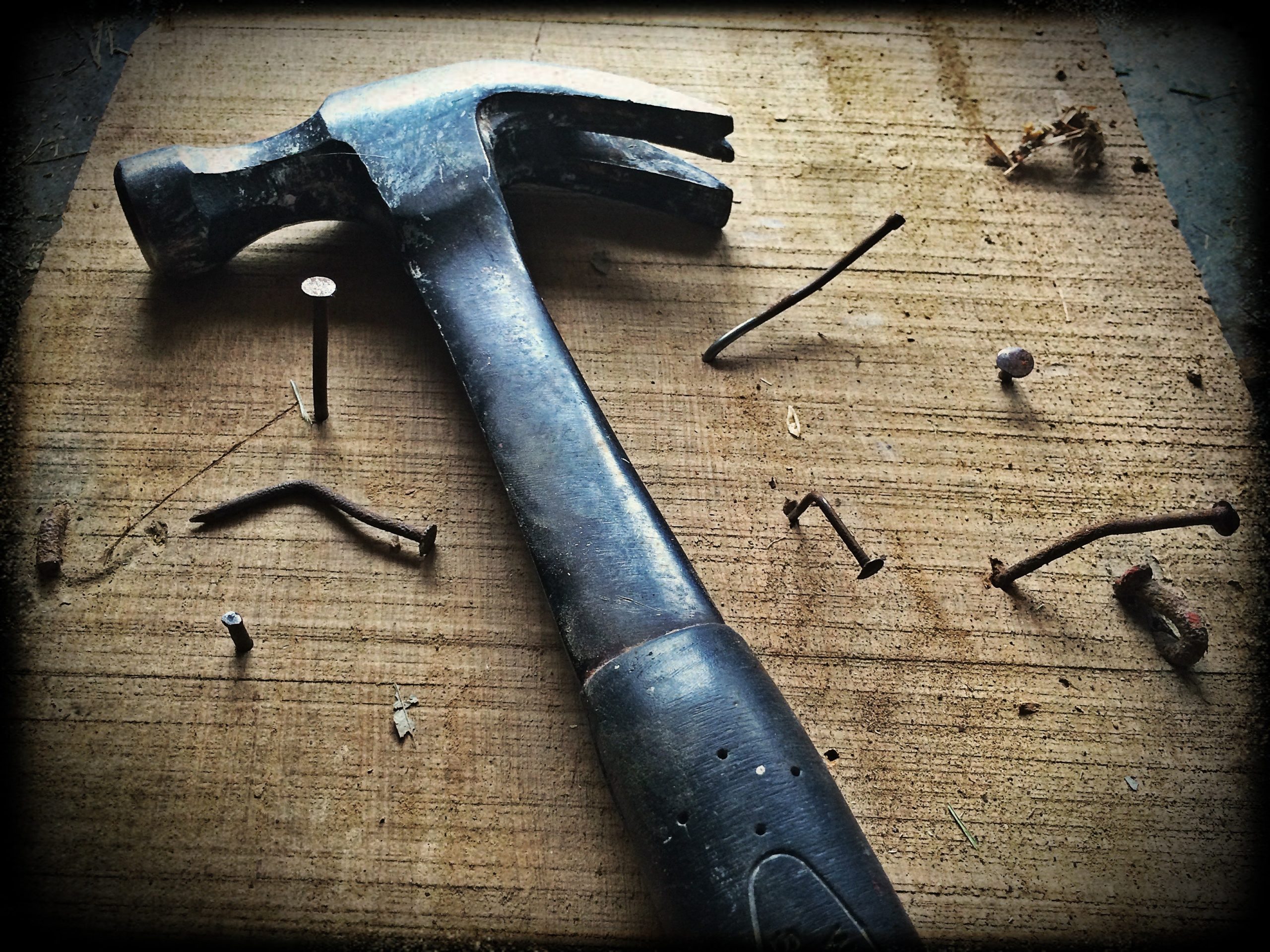How does Crucifixion actually kill you?
What was crucifixion and how did being crucified kill you? Crucifixion is a type of public torture designed to kill a person slowly and with the maximum level of pain a human being can endure without losing consciousness.
by Anna Kitko, Ratio Christi Regional Director for Tennessee and South Carolina.
Crucifixion:
The utterly vile death of the cross. This was the most egregious punishment permitted for convicts under Roman law.
A death bound with iron
“Let her continue as she pleases, persisting in her vain delusions, and lamenting in song a god who died in delusions, who was condemned by judges whose verdict was just, and executed in the prime of life by the worst of deaths, a death bound with iron.”
The answer given by an oracle of Apollo (c. 284 AD) to a man inquiring how he could dissuade his wife from her Christian beliefs. Recorded by Porphyry and preserved in the writings of Augustine.
(Civitas Dei 19.23; p. 690 CC)
Unthinkable
The crucifixion of Jesus is called “folly” and “madness” in the writings of both Paul and the Early Church Fathers for a reason: the idea that the God-Man would be killed in the most heinous of fashions is not only unthinkable, it’s abhorrent. The fact that the very epicenter of the Christian message is described by Paul to include this method of execution runs completely against what we understand about the political climate of the Roman era as well as the religious expectations of a Hellenized culture.
Nothing on the level of crucifixion
For example, if we look at the deaths of the demigods in the Greek, Roman, and Egyptian pantheons, we find barbarism sure, but not on the level of crucifixion: Attis and Adonis were gored to death by a wild boar, Osiris was shredded to death by Titans, and even the great Hercules self-immolated on Mount Oeta. But the difference is that in these cases, their deaths were less concerning than a death by crucifixion. Why? Well, let me show you. Fair warning: If you have a weak constitution for gore, best to stop reading now….
Not for the squeemish
Crucifixion begins not with the victim, but rather with the executioner. The reason that this is so is because if an executioner is given complete sovereignty over the initial death blows of the victim, the punishment may be doled out with as high a level of caprice and sadism as possible in that moment. For this reason, the possibilities for the authoring of physiological pain are endless. Take for example, Josephus’ account detailing just how creative executioners can be in this,
“When they were being taken (by the Romans), they were forced to defend themselves, and after they had fought they thought it too late to make any supplications for mercy: so they were first whipped, and then tormented with all sorts of tortures, before they died and were then crucified before the wall of the city. Titus felt pity for them, but as their number-given as up to 500 a day- was too great for him to risk either letting them go or putting them under guard, he allowed his soldiers to have their way, especially as he hoped that the gruesome sight of the countless crosses might move the besieged to surrender: ‘So the soldiers, out of the rage and hatred they bore the prisoners, nailed those they caught, in different postures, to the crosses, by way of jest, and their number was so great that there was not enough room for the crosses and not enough crosses for the bodies.”
Josephus 5.449-51

Insult – and more injury
Once the executioner is satisfied with the victim’s torture, the next phase is to carry the implement that they will be hung on to its final destination. For some, this was simply the cross bar that their arms would be bound to, for others, it was the entire cross. The goal of which is of course, yet more pain as the rough sawn wood on the victim’s shoulders and back would be extremely painful. But even more so, the lifting and carrying of something that heavy for any distance would also continue to cause respiratory distress and muscle fatigue. This was a purposeful design as this physiological environment is precisely what crucifixion is designed to maximize and prolong in the victim’s experience.
Final destination for the cross and the crucified
Upon arrival at their final destination, the victim would be attached to their cross by any combination of ropes and nails. Nails would be struck though the wrist or palm and also at the ankle. A peg was placed near the groin area so that while the victim hung arms outstretched horizontally and feet firmly attached together vertically, they would have access to a small seat. The purpose of the peg was to give the victim a place to attempt to balance for temporary relief as to fail to do so left the victim at the mercy of gravity forcing their thorax down, compressing the space for their lungs to expand and therefore making it impossible for their diaphragm to allow oxygen into their chest cavity.
The cause of death in crucifixion
Thusly, if the victim failed to pull themselves up onto the peg, then they were unable to breathe. Since the victim was already fatigued and the points of their body at which they would have to leverage themselves had recently been impaled, the resulting effect was a choice left up to the victim to decide: suffocate slowly while you fight for air, or bear weight on the points where you have been impaled, thus reopening any wounds that have clotted on your back as well as re-experiencing the pain that comes with impalement while enduring whatever body weight has not been accounted for sitting squarely on your genitofemoral nerves.
The resulting predicament for the victim begins a set of simultaneous potential causes of death:
Cardiac Rupture: this is where one or more ventricles or atria of your heart muscle becomes lacerated and you bleed out internally.
Heart Failure: in this case, the victim’s heart becomes so fatigued that it stops beating all together.
Hypovolaemic Shock: this is when you bleed out to such a degree that there is no longer enough blood to carry oxygen to the rest of your body and you experience multiple organ failure.
Syncope: In this case, the victim loses consciousness due to a fall in blood pressure and fails to regain consciousness fast enough to bring their body back to balance on the peg.
Respiratory Acidosis: This occurs when carbon dioxide builds to a toxic level in the bloodstream; which can occur when the victim is subjected to prolonged respiratory distress weakening the muscles in the chest wall.
Asphyxia: Death by suffocation.
Pulmonary Embolism: When an artery in the lungs becomes blocked by a blood clot and removes the person’s ability to process oxygen.
Takotsubo Syndrome: Otherwise known as death by broken heart, is an emotional stress or anxiety-induced surge of adrenaline and norepinephrine that creates a toxic environment for cardiac tissue. The victim’s arteries tighten to such a degree that it stuns the heart into a rapid rise of blood pressure, the consequence of which is congestive heart failure.

So many possibilities
The fact that there are so many possibilities for cause of death makes it near impossible to determine precisely which one is the most likely. Moreover, the duration of time a human being can endure in this state also has an unknown limit. As far as documented cases go however, the longest duration of time a human being has endured this torture is of course also the most famous: Jesus of Nazareth. He endured this process for a full six hours (9AM-3PM according to the Gospel of Mark). And this reality of course emphasizes the reliability of the Gospel accounts as they accurately describe a specific medical condition that is incurred after having experienced the conditions we have laid out in this article: the presence of water coming from Jesus’ side when he is pierced by the Romans (John 19:28-37). Victims who experience any combination of heart failures or embolisms very often also experience a secondary condition that develops as a result: Pleural Effusion, or fluid build-up in the chest cavity. Moreover, the sack that surrounds the heart also experiences what is called Pericardial Effusion, which is yet another area that fills with fluid. This explains why, when Jesus’ side was pierced, that witnesses viewed material other than blood pouring out of Jesus’ chest cavity as he had endured a long enough duration of time for such a build-up to occur.
“Christmas and Easter can be good subjects for poetry, but Good Friday, like Auschwitz, cannot. The reality is so horrible it is not surprising that people should have found it a stumbling block to faith.”
W.H. Auden
For citations and more information see Martin Hegel’s work, Crucifixion.

LEARN MORE ABOUT
Anna Kitko is a Christian Apologist who specializes in Cults and New Religions. Her writing ranges from solving biblical difficulties to training people how to avoid coercive persuasion from aberrant Bible-based groups. She is an avid reader of Christian history and loves to point out ancient heresies being re-packaged and re-distributed in our culture. In addition to being a Regional Director for RC, she personally directs the chapter at University of Tennessee-Knoxville. Anna can be contacted at annakitko@ratiochristi.org.
Disclaimer:
Disclaimer: The views expressed in these blogs are the opinions of the writers. These opinions do not necessarily align with the Ratio Christi mission, values, or statement of faith. In an effort to encourage conversations and healthy debate, we encourage a variety of views. Please view our statement of faith for more information about what we believe.










Leave A Comment